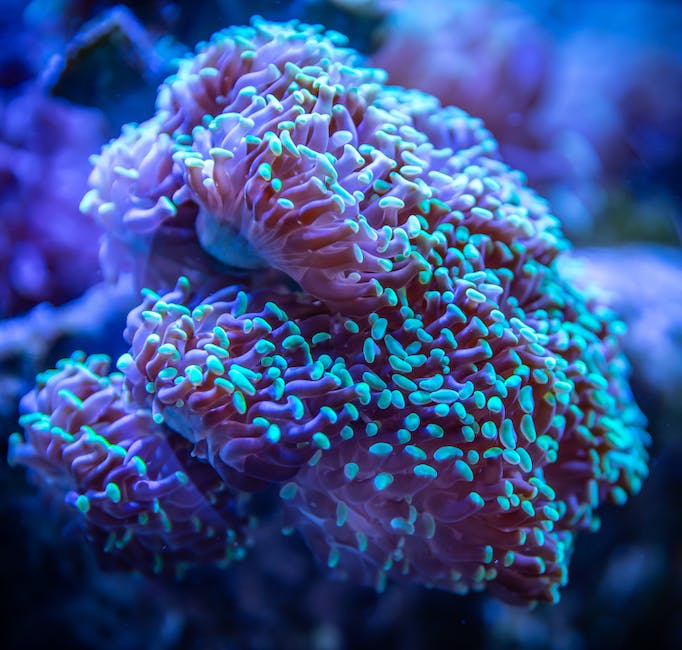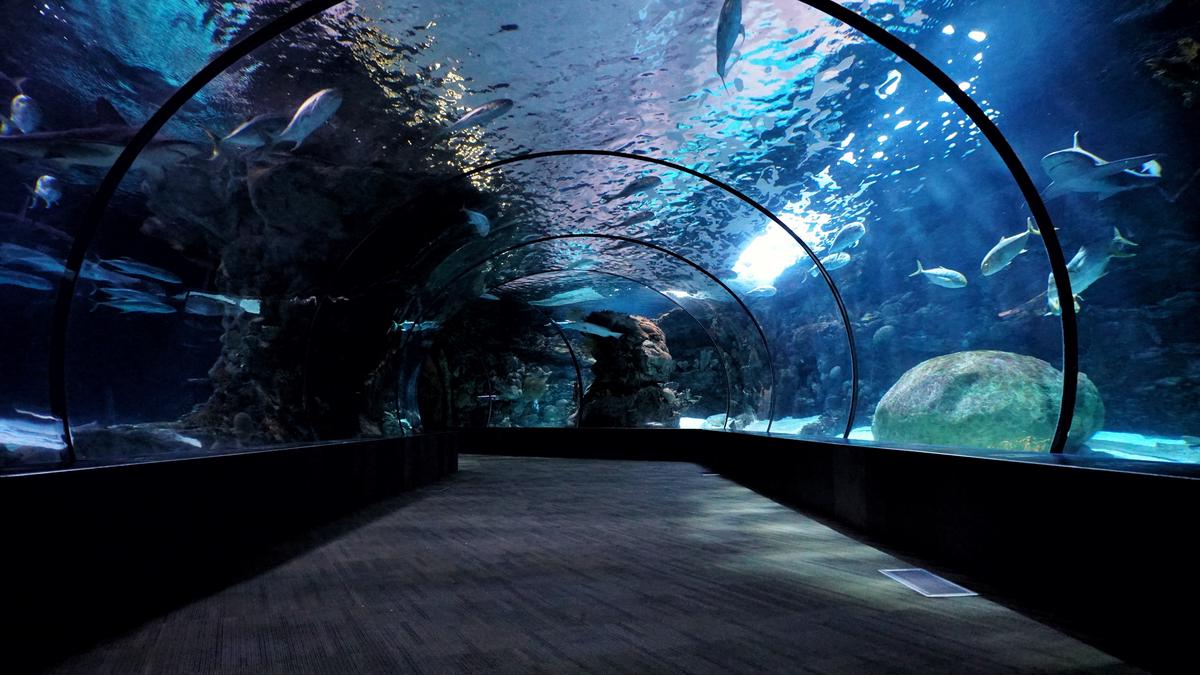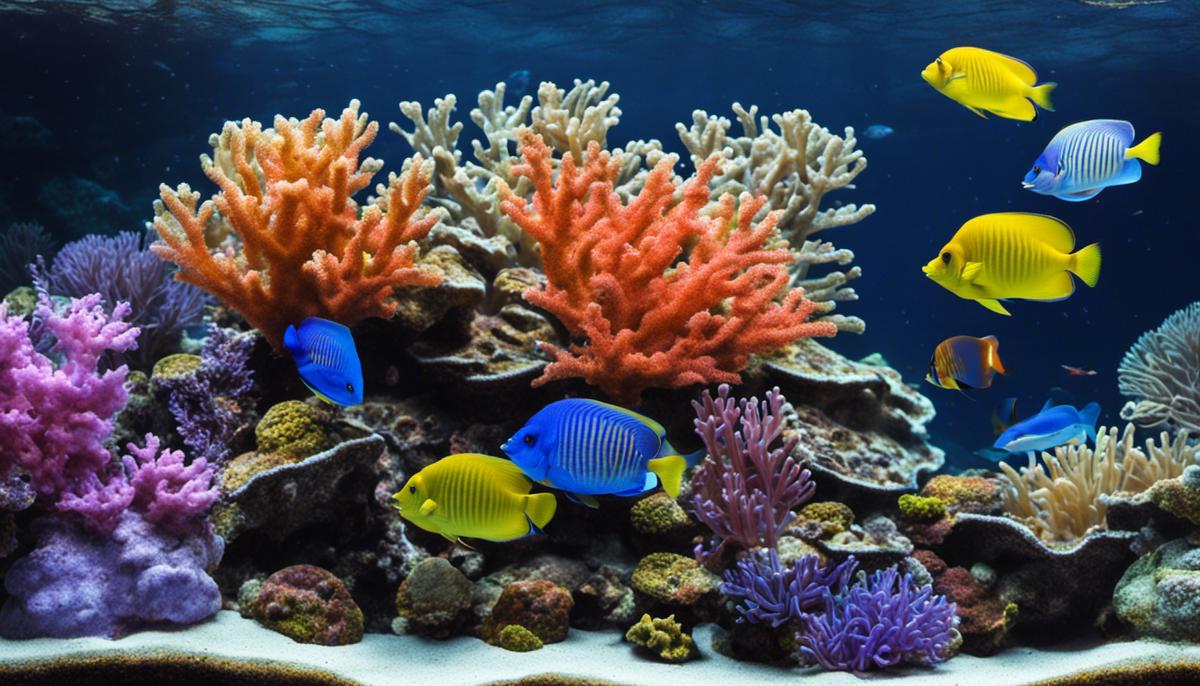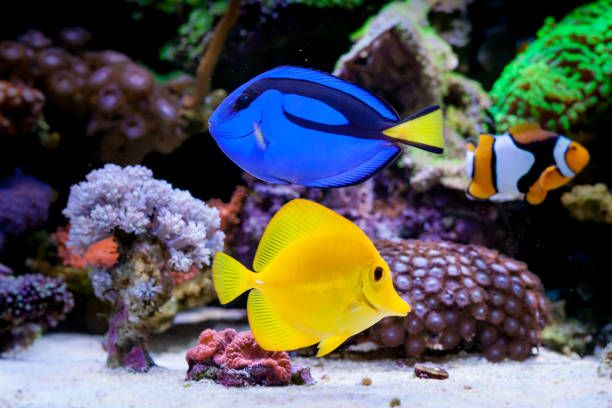Underneath the tranquil surface of a saltwater aquarium lies a world of vibrant marine life, delicate ecological harmony, and unexpected beauty that is captivating to observe. However, setting up your own saltwater aquarium can seem like an overwhelming task. But rest assured, with the correct knowledge and guidance, anyone can create their own underwater ecosystem. This guide will walk you through the process in an easy-to-follow manner, from understanding different types of saltwater aquariums, selecting the right equipment to maintaining the optimum water quality, and finally, choosing and caring for marine life that will inhabit your aquarium.
Understanding Different Types of Saltwater Aquariums
Understanding Fish Only (FO) Saltwater Aquariums
Fish Only (FO) saltwater aquariums, as the name suggests, are tanks that house only saltwater fish. The main focus of FO aquariums is the fish and their interactions, so the preferences, diets, and behaviors of the chosen fish species are crucial to understand. This kind of aquarium does not require the same level of maintenance as others might, making it ideal for beginners. The catch is that without a hitch, corals, or live rock for biological filtration, maintaining water quality can be challenging. Regular water changes and attentive care are required to maintain the health of the tank.
Fish Only with Live Rock (FOWLR)
Fish Only with Live Rock saltwater aquariums (FOWLR) are similar to FO saltwater aquariums with an added feature: live rock. Live rock is composed of coral skeletons and other calcareous organisms, and it introduces beneficial bacteria and other microorganisms into the tank. These organisms help create a stable environment by breaking down fish waste, excess food, and other organics, thereby providing biological filtration. Even though these types of aquariums require slightly more maintenance than FO tanks because the live rock needs careful consideration (lighting, water flow, and placement), they provide a more natural environment for the fish.
Understanding Reef Tanks
Reef Tanks are the most complex kind of saltwater aquariums because they contain corals, invertebrates, and fish. These elements require specific lighting, water conditions, and feeding requirements to flourish. For instance, corals need high-intensity lighting for photosynthesis. On the plus side, the live rock and corals can provide a great deal of the tank’s biological filtration, reducing the need for frequent water changes. This type of aquarium requires more extensive knowledge and maintenance but offers a visually impressive miniature underwater ecosystem.
Choosing Between FO, FOWLR, and Reef Tanks
When you choose your aquarium, consider your experience and the amount of time you’re willing to spend on tank maintenance. An FO tank might be best for you if you’re a beginner interested in fish behavior. If you’ve had some experience and want to add some complexity without going all out, a FOWLR tank could be the ideal choice. However, if you’re ready for a rewarding challenge and have extensive knowledge about saltwater creatures and their needs, a reef tank can offer a stunning replica of the aquatic biosphere. Each type has its strengths and downsides, but all of them provide an opportunity to engage intimately with the captivating world of saltwater life.

Choosing the Right Equipment
Choosing the Right Aquarium Tank
Starting a saltwater aquarium setup begins with finding the right tank. Saltwater tanks generally require larger sizes with a minimum of 30 gallons suggested for beginners. This is because the larger volume of water is more forgiving of beginner mistakes, such as overfeeding. When selecting a tank, consider the species of fish you plan to host. Marine species are accustomed to more space, so pay attention to tank dimension as well as capacity, ensuring sufficient width and height. Finally, the material of the tank can also make a difference. Glass is less expensive and clearer, providing undistorted viewing but it’s heavier than acrylic. Acrylic tanks are lighter and more impact-resistant; however, they can scratch easily.
Understanding the Filtration System
Every aquarium requires a proper filtration system to keep the water clean for your aquatic inhabitants. Choosing the correct filter largely depends on the size of your tank and the types of marine life that will live inside it. For saltwater tanks, you typically need a system that tackles both mechanical and biological filtration. Mechanical filtration removes particulate matter, like food waste or fish waste, from the tank. Biological filtration, on the other hand, handles the elimination of harmful toxins like ammonia and nitrates produced by your fish. Popular options include power filters, canister filters, and sump filters.
Lighting System for Your Aquarium
A critical aspect of a saltwater tank setup is the lighting system. It’s not only necessary for viewing the aquarium, but it’s also vital for photosynthesis in live plants or corals if they are part of your aquarium. Saltwater aquariums often require more intense lighting than freshwater ones. Two common types are fluorescent and LED systems. While fluorescent lights can support fish, they may not be powerful enough for corals. LED lights have gained popularity due to their energy efficiency, brightness, and ability to support a variety of marine life, including corals.
Aquarium Heating – Maintaining the Right Temperature
Maintaining the right temperature range is essential for the health and well-being of your marine life. Most tropical saltwater fish require a constant temperature of 75-82°F. Heaters come in submersible or non-submersible types and in different sizes. A larger aquarium may require more than one heater to maintain an even temperature. Don’t forget to also purchase an aquarium thermometer to monitor the water temperature.
Importance of Water Testing Kits
Regular testing of your saltwater aquarium is important to maintain optimal water quality. These kits allow you to monitor levels of pH, ammonia, nitrite, and nitrate to prevent harmful spikes that could harm or even kill your fish. You usually want to check these levels every week. High-quality testing kits are a vital tool in the successful maintenance of your aquarium.

Photo by zachspears on Unsplash
Aquarium Water Quality and Maintenance
Understanding Saltwater Aquarium Water Quality
For a healthy saltwater aquarium, maintaining the right water conditions is paramount. This includes checking parameters such as salinity, pH, nitrate, and ammonia levels. Since various marine organisms have different preferences, ensure that the water mimics their natural habitat.
Checking Salinity
The salinity of your aquarium should parallel the salinity of natural seawater, which is usually measured as specific gravity and should be between 1.022 and 1.026. To measure this, use a hydrometer or a refractometer. A brief dip of the device into your aquarium water will give a salinity reading. If the reading isn’t within the healthy range, use a commercial salt mix to adjust the levels.
Monitoring pH Levels
Ensuring the right pH levels is key to the survival of your aquarium’s inhabitants. The pH of a saltwater aquarium should ideally be between 8.1 and 8.4. Use test kits that are specifically designed for marine aquariums to test pH. If the pH level is too low, consider using a buffer.
Inspecting Nitrate and Ammonia Levels
Nitrate and ammonia are waste products generated by the marine animals. If they accumulate, they can make the water toxic. So, regularly inspecting nitrate and ammonia levels in your aquarium is imperative. These should ideally remain at zero. Use a nitrate or ammonia test kit to measure the levels. If the levels are high, consider a water change or a cleaning.
Aquarium Cleaning Regimen
To ensure your aquarium stays clean and clear, create a regular cleaning regimen. This could include wiping the interior walls of the aquarium to remove any algae buildup and vacuuming the substrate to remove uneaten food, plant material, and waste. Also, always clean or replace filters regularly as they trap waste and particles, and once filled, they will start to release them back into the water.
Conducting Regular Water Changes
Regular water changes are essential to maintain suitable water conditions in your aquarium. It’s advisable to replace 10-20% of the tank’s water every week. This helps dilute pollutants in the water, control nitrate accumulation, and replace important minerals. Use a siphon to remove the water and remember to match the temperature and salinity of the replacement water to that of the existing water to prevent shocks to the tank’s inhabitants.

Selecting and Caring for Marine Life
Selecting Suitable Marine Life for Your Saltwater Aquarium
When setting up a saltwater aquarium, the first step is to determine which types of marine life are most suitable. There is a wide range of aquatic species that thrive in a marine environment, including fish, invertebrates, and corals. When choosing, consider each species’ size, behavior, activity level, and environmental preferences.
Do research to make sure your choices are compatible with each other. Grouping aggressive fish with timid ones, for instance, might lead to constant stress or harm for the latter. Certain species might also prefer different water currents, temperature ranges, or lighting levels, which could create compatibility issues in a shared tank environment.
Understanding Feeding Needs of Marine Life
Marine animals have diverse feeding needs and it’s important to know what each species in your tank requires. Some fish are carnivorous (meat-eaters), some are herbivorous (plant-eaters), and others omnivorous (both meat and plant eaters). Organisms like corals and some invertebrates may require special food or feeding methods.
Research each species’ diet and try to mimic it as closely as possible in your aquarium. Regularly monitor the health and behaviors of your marine life, as sudden changes might indicate problems with their diet or health.
Acclimating Marine Life to Their New Environment
After purchasing your marine life, the next step is to properly acclimate them to their new home. The basic process usually involves floating the bag containing the marine life in the tank to even out the temperature, then gradually introducing small amounts of tank water into the bag over the course of an hour or more.
Some species, however, might require a longer acclimation process or different procedures, especially if there are significant differences in water quality or temperature between their old and new environments.
Remember, patience is key when acclimating marine life. An unsuccessful acclimation could result in stress, illness, or even death.
General Care and Maintenance
Maintaining a saltwater aquarium can be demanding but rewarding. Regular tasks include feeding the animals, cleaning the tank, and monitoring water parameters like temperature, pH, salinity, and ammonia levels.
When problems arise, it’s important to address them quickly. Saltwater creatures are sensitive to changes in their environment and can become sick or die if conditions are not optimal.
Lastly, enjoy the process! Keeping a saltwater aquarium provides a unique opportunity to observe and care for a small slice of the ocean within your own home.

With a well-thought-out plan, appropriate equipment, careful selection of marine life, and diligent maintenance, a saltwater aquarium can serve as a serene microcosm of the ocean in your living room. However, remember it’s not just about aesthetically pleasing arrangements or fascinating fish species; it’s about understanding and simulating the natural habitats as closely as possible for these stunningly beautiful but sensitive species. This approach can ensure the long-term health of your aquarium and the creatures that call it home. Let this guide serve as your roadmap, leading you through each step of the journey to bring a bit of ocean life into your world.
ChasingNemo.com is a participant in the Amazon Services LLC Some of the links in our posts are affiliate links. Click Here For Full Disclosure.







